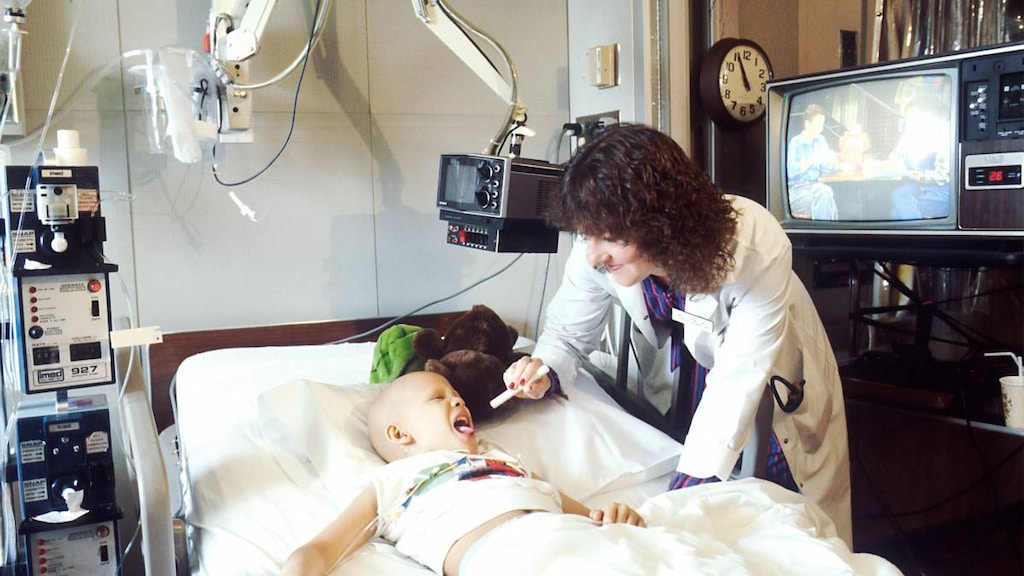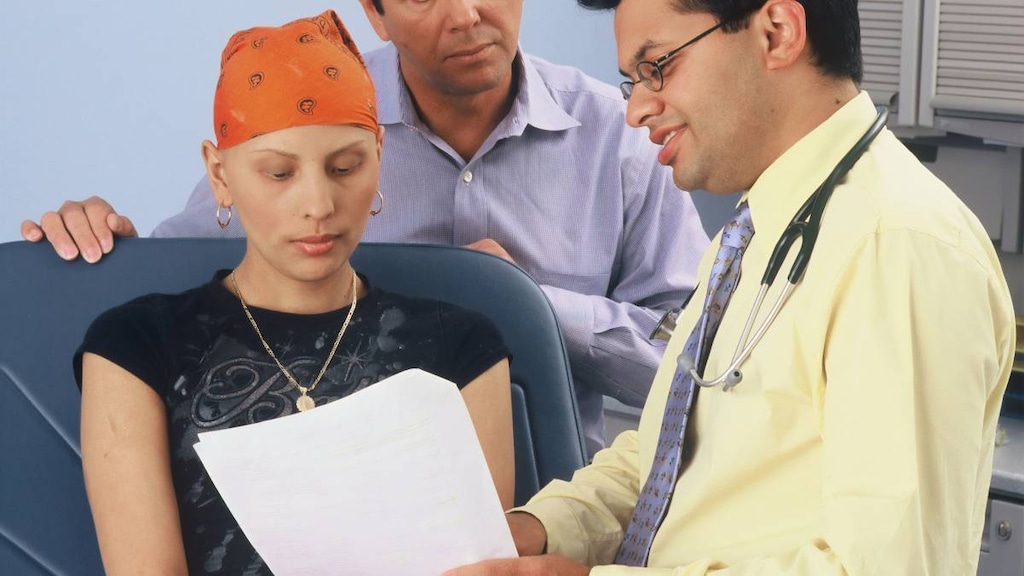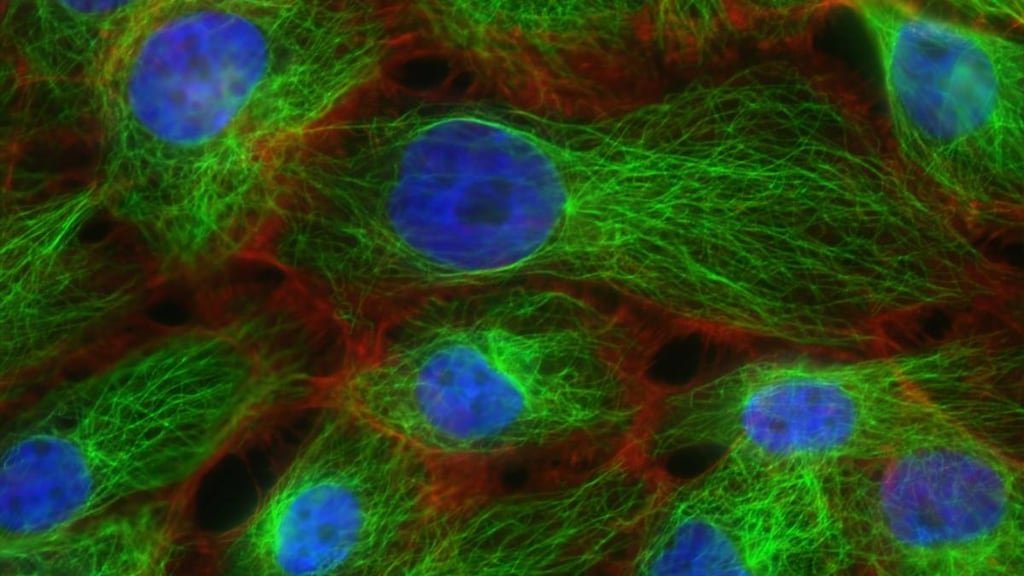Leukemia vs. Lymphoma: What’s the Difference?

Leukemia and lymphoma are cancers of the blood. Sometimes referred to as “liquid tumors" or hematologic cancers, these cancers can affect the blood cells, bone marrow and lymphatic system. One person is diagnosed with a blood cancer about every three minutes in the United States, the Leukemia & Lymphoma Society says, and each year more than 176,000 people are expected to be diagnosed with leukemia, lymphoma or myeloma, another type of blood cancer.
But there is a silver lining. Overall, people with blood cancers face better prognoses today than in the past. This is thanks to research that has bettered our understanding of blood cancer subtypes, which, in turn, has led to marked improvements in the treatment of these cancers (namely chemotherapy) in recent decades.
Types of leukemia and lymphoma
Leukemia
This cancer affects the blood and bone marrow, the soft inner core of the bones where blood cells develop. Leukemia forms when these cells in the bone marrow begin to grow out of control. The primary types of leukemia are:
- Acute lymphocytic leukemia (ALL)
- Acute myelogenous leukemia (AML)
- Chronic lymphocytic leukemia (CLL)
- Chronic myelogenous leukemia (CML)
While leukemia affects about 10 times more adults than children, it is the most common cancer among children, according to the National Cancer Institute. ALL is by far the most common leukemia subtype among children, making up about 75 percent of childhood cases. In adults the most common subtype is AML.
Lymphoma
The term lymphoma encompasses more than 70 blood cancers stemming from the lymphatic system. These range from slow-growing to extremely aggressive cancers. Most types of lymphoma stem from two types of white blood cells — B lymphocytes (also called B cells) and T lymphocytes (T cells). The diseased cells can spread to other parts of the body — including the blood, bone marrow, lymph nodes, spleen and other organs — and form tumors.
There are two primary forms of lymphoma, both of which can occur in children and adults: Hodgkin's lymphoma and non-Hodgkin's lymphoma. Hodgkin's lymphoma is one of the most curable types of cancer, and many subtypes of non-Hodgkin's lymphoma are also highly curable. Other subtypes of non-curable non-Hodgkin's lymphoma are treatable but incurable.
Similarities and differences
Leukemia and lymphoma are both cancers affecting blood cells. These cells form in the bone marrow, a squishy material at the center of the bones. Millions of new blood cells form each day. The main types of blood cells are:
- Red blood cells, which transport oxygen
- White blood cells, which prevent and combat infection
- Platelets, which help with blood clotting
Like all cancers of the blood, both leukemia and lymphoma affect the production and function of blood cells. Most blood cancers form in the bone marrow, proliferate and interfere with the normal production of blood cells. Cancerous blood cells prevent the blood from functioning properly — for instance, affecting its ability to combat infection or prevent uncontrolled bleeding.
The difference between leukemia and lymphoma is that leukemia begins in the bone marrow and affects blood cells, while lymphoma affects cells in the immune system and tends to be found in the lymph nodes. With leukemia, the affected cells overwhelm or interfere with the formation of normal blood cells. With lymphoma, lymphocytes proliferate and do not die off when they are supposed to.
Risk factors
There are certain factors that increase a person’s likelihood of developing leukemia or lymphoma.
Leukemia risk factors: Specific risk factors for leukemia include:
- Radiation or chemical exposure: The main risk factor for leukemia is exposure to high levels of radiation or certain chemicals. This is especially true for AML. People affected by high doses of radiation include workers at nuclear weapons plants and those exposed to radiation from nuclear reactor accidents, such as the incident in Fukushima, Japan, in 2011. Exposure to certain solvents, such as benzene, is another risk factor. And there is some evidence to suggest that veterans’ exposure to Agent Orange during the Vietnam War may be a risk factor for CLL.
- Smoking: Cigarettes contain scores of carcinogenic chemicals. It is estimated that about one-fifth of AML cases are linked to smoking.
- Chemotherapy and radiation therapy: These therapies can lead to mutations in the DNA of cells, and these mutations can cause cancers such as leukemia.
- Myelodysplastic disorders: Approximately a third of people with these bone marrow conditions develop leukemia.
- Genetic disorders: People with disorders such as Down syndrome, Bloom syndrome, Fanconi anemia and ataxia-telangiectasia have a slightly higher risk of developing leukemia.
- Family history of CLL: Those with a parent, sibling or child with CLL have a higher risk of developing the disease. However, most people who develop leukemia do not have a family history of CLL.
It is important to note that many people with one or more risk factors for leukemia never develop the disease.
Lymphoma risk factors: Some risk factors differ for Hodgkin and non-Hodgkin lymphoma.
- For Hodgkin lymphoma they include:
- History of Epstein-Barr virus (EBV) infection
- History of mononucleosis
- Compromised immune system from HIV or a medical treatment, such as an organ transplant, that suppresses your immune system
- Age. Hodgkin lymphoma is most common among people 15 to 40 years old and those older than 55.
- Family history. About 5 percent of lymphoma cases are linked to a family history of the disease.
- Risk factors for non-Hodgkin lymphoma include:
- Age. The disease is most common among people older than 60.
- Exposure to chemicals such as benzene, pesticides and herbicides
- Radiation therapy
- Chemotherapy treatment
- Exposure to radiation
- HIV infection
- Other immune system deficiencies
- Infection with Epstein-Barr virus, HTLV-1 or HHV8
- Chronic hepatitis C or Helicobacter pylori infection
Cures and treatment for leukemia and lymphoma
Cures exist for some, but not all, forms of leukemia and lymphoma. Other forms are incurable but can be kept under control with medical treatment. The treatment and potential for cure depend on the type of leukemia or lymphoma and the stage at which it is caught.
In recent years, several drugs have vastly improved the efficacy of blood cancer cures and the rate of remission. What’s more, certain genes have been identified that can help doctors determine which treatments may be most effective for a particular person.
Treatment options for leukemia and lymphoma include:
- Chemotherapy: Chemotherapy is the main type of treatment for blood, bone marrow and lymphatic cancers. In most cases, these drugs are administered intravenously into the bloodstream. Examples include vincristine, doxorubicin and cyclophosphamide.
- Radiation therapy: This involves directing X-rays or other high-energy beams toward leukemia cells to halt their growth.
- Targeted therapy: This involves the use of drugs that halt the growth and spread of cancer by targeting molecules involved in the growth of tumors. Examples of such therapies used to combat blood cancers include dasatinib and nilotinib.
- Biological therapy: This therapy works by helping the immune system identify and attack blood cancer cells. One example of such therapy is rituximab, a monoclonal antibody used to treat non-Hodgkin lymphoma.
- Stem cell or bone marrow transplant: This procedure replaces diseased bone marrow with healthy bone marrow.
In addition to these common treatments, some people with leukemia and lymphoma may be eligible to participate in clinical trials, which are research studies designed to assess the safety and effectiveness of new treatments and therapies. All of the drugs and therapies that are available today were tested in clinical trials before being approved to treat patients. If this interests you, talk with your primary care doctor or oncologist to find out if you might be able to take part in a clinical trial focusing on leukemia and lymphoma.
Article references
- Rogel Cancer Center, Overview Leukemia and Lymphoma https://www.rogelcancercenter.org/blood-cancer/overview-leukemia-and-lymphoma
- The Leukemia & Lymphoma Society, Facts and Statistics https://www.lls.org/facts-and-statistics/facts-and-statistics-overview
- The Leukemia & Lymphoma Society, Leukemia https://www.lls.org/leukemia?src1=27336&src2
- National Cancer Institute, Leukemia https://www.cancer.gov/types/leukemia
- The Leukemia & Lymphoma Society, Lymphoma https://www.lls.org/lymphoma?src1=27336&src2
- MacMillan Cancer Support, What are blood cancers? https://www.macmillan.org.uk/information-and-support/blood-cancer/what-are-blood-cancers.html#260325
- American Society of Hematology, Blood Cancers https://hematology.org/Patients/Cancers/
- Allegheny Health Network, Leukemia & Lymphoma https://www.ahn.org/__cancer-institute/leukemia-lymphoma
- Memorial Sloan Kettering Cancer Center, Risk Factors for Leukemia https://www.mskcc.org/cancer-care/types/leukemias/risk-factors
- Roswell Park Cancer Center, What Are the Risk Factors for Lymphoma? https://www.roswellpark.org/cancer/lymphoma/about/risk-factors
- Memorial Sloan Kettering Cancer Center, Types of Lymphoma https://www.mskcc.org/cancer-care/types/lymphoma/types
- Dana-Farber Cancer Institute, Acute Lymphoblastic Leukemia (ALL) in Children http://www.danafarberbostonchildrens.org/conditions/leukemia-and-lymphoma/acute-lymphoblastic-leukemia.aspx





